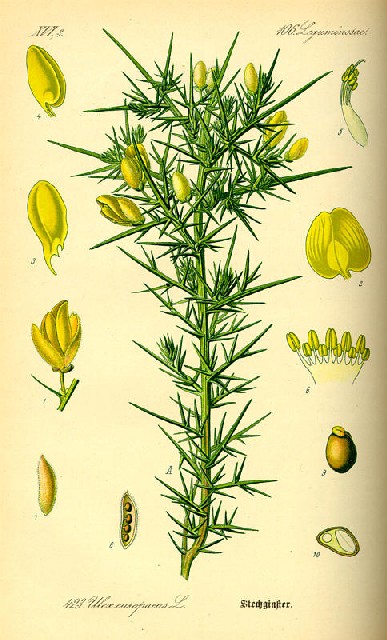
(Author: Josu Larrauri Elortegi)
The name Elortegui is formed by the root "elorri.", meaning hawthorn and the ending ".tegui", meaning "place",
both words coming from the Basque language (euskera).
So, the translation would be place with thorn bushes.
Even today, the mountain side of the caserios Elortegui Goikoa and Elortegui Bekoa
are plentiful with elorri.
The elortza, also named ote at some places in Euskadi, it is known as
tojo at Castile,
toxo at Galicia,
espinillo at Chile,
ajonc in french and
gorse in
english.
It is a dicotyledonous leguminous with the scientific name ulex europaeus.
It has a wide distribution,
as it was introduced in many countries. Its origin is the Atlantic Europe and it can be found at the
Mediterranean coast,
Tenerife and Azores.
In other places it is considered a invasive plant that becomes a plague:
Chile,
Colombia,
Argentina,
Australia,
Hawaii,
USA.
It is a half meter to two meters high bush, very ramified ant tight, well
adapted to dry and poor grounds and sunny places. It has 1 to 3 cm long thorns
and it blossoms in the mid summer. It is very flammable and moderately toxic,
specially for the eyes.
(You can see photos at the lower side of the page)
The ancestral home had the Elorri denomination but the
name evolved to Herortegui or Erortegui in the 16th century and became Elortegui
about 1700, as it appears at the baptismal and marriage documentation of the Catholic Church.
There is a reference to the Elortegui name by Don Sabino de Arana y Goiri (the Nationalist Basque
Party founder) in his Tratado Etimologico.

(Author: Josu Larrauri Elortegi)
